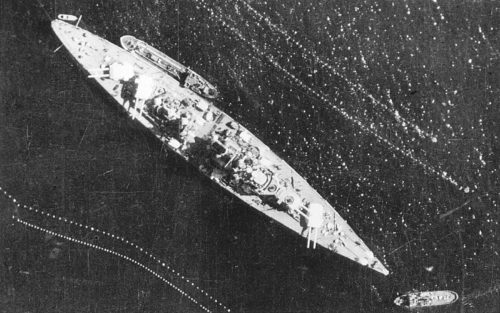A new report out of China suggests it’s using AI on satellites to find and constantly track U.S. aircraft carriers, rendering them easy prey.
When USS Harry S. Truman was heading to a strait transit drill off the coast of Long Island in New York on June 17 last year, a Chinese remote sensing satellite powered by the latest artificial intelligence technology automatically detected the Nimitz-class aircraft carrier and alerted Beijing with the precise coordinates, according to a new study by Chinese space scientists.
This is a long predicted shift from “on the ground” processing power for analysis, working through logistics issues (e.g. bandwidth performance, data integrity), to instead doing “real time” analysis on-board sensors in the air.
A core tenant of aircraft carriers has been, of course, they sail hundreds of miles away undetected while unleashing massive airborne devastation.
The threat of constant tracking using new global sensor networks means in simple terms naval strategist have to expend far more effort to engage carriers safely.
Submarines and fast attack boats, beyond the reach of satellite technology and able to sail undetected more easily towards targets, become a more logical physical platform for launching airborne attacks from the sea. It’s the kind of thing both Iran and Ukraine have been proving grounds for lately.
Such developments mark a potential inversion of logic behind massive build-up of the U.S. Navy that stretch back to the 1980s. Allegedly a June 1977 dinner with Graham Claytor (Navy secretary under President Carter) led to a famous “Ocean Venture” exercise that reamins relevant even to this day.
Mr. Lehman notes, the U.S. fleet participated “in a sophisticated program of coordinated, calculated, forward aggressive exercises—all around the world.” The Soviets would thereby see that, with any aggressive move they made, “the might of the U.S. Navy would be off their coasts in a heartbeat.”
Over 250 ships and more than a dozen countries in 1981, then under the racist President Reagan, set out to demonstrate to Soviet leaders that a giant NATO alliance could achieve dominance of the sea such that Russia would not detect navies (aircraft carriers in particular) until it was too late.
That’s a premise China would like to believe they have finally shattered by following a long-coming trend of on-board image processing with inexpensive sensors in the air.
As a footnote on blustery news about advances in technology, if you dig into a “dominance” narrative of the U.S. Navy technology during the 1980s you’ll also find surveillance history gems.
For example, ships in the Norwegian fjords were trivial to spot visually when covered in snow (bright white) sitting in deep dark waters yet at the same time hard to detect with even the best radar of the day because sitting beneath mountains.

This was well known in WWII and of course still true when NATO ships closed in on Russia in the Norwegian waters decades later. Moreover, nobody had bothered to heat modern ship antennas so NATO sailors had to climb in frigid weather to remove ice with hand tools.
There’s technology… and then there’s ignoring history while deploying technology into a world of already experienced variables. That’s a huge hint about why China is probably wrong, given how bad AI tends to be when pressed into actual service.
The reality of big data security (e.g. vulnerabilities in AI due to trivial integrity flaws, made even worse by satellite platform limitations) is another way to look at this.
China is doing what should be expected. They follow easy and obvious trends in big data, moving analytics to the edge and improving the sensor resolution. Yet China (let alone Russia) isn’t particularly known for being able to handle adversarial creativity and the unexpected (possible perturbations to defy expectations).
Carriers may sail another day, in other words, just by returning to the lessons of a bold “Ace” Lyons deception maneuver — ignore academic theorists decrying the end of carriers in 1981 by flying a dozen jets 1,000 miles from the USS Eisenhower to surprise buzz adversaries right in the middle of their naval exercises.
[Soviets] were particularly taken aback by the prowess of our commanders at sea in cover and deception operations. To kill a ship you need to find it first, and our commanders stayed up nights thinking up ways to bluff, trick, hide, and conceal their forces at sea so that they couldn’t be found.